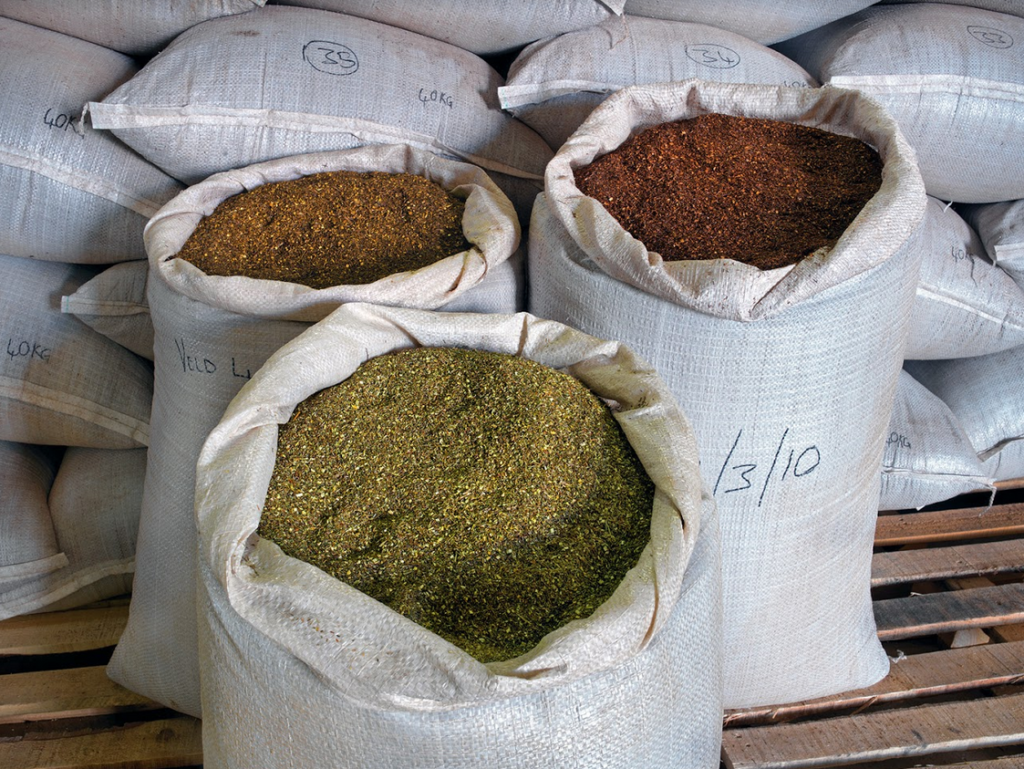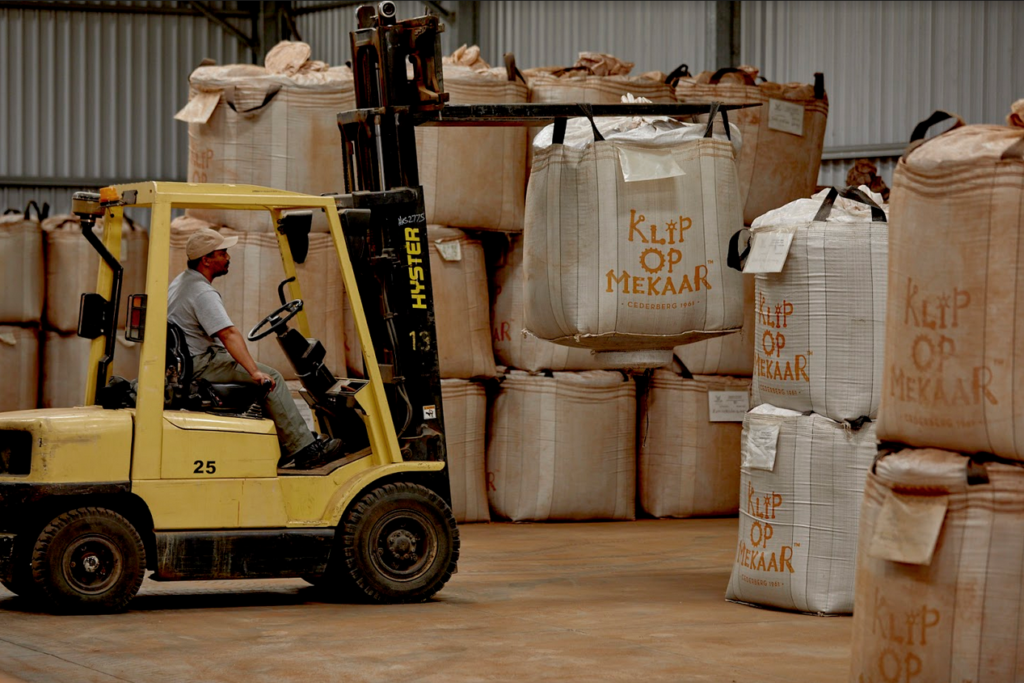- richard@klipopmekaar.co.za
- Certified organic rooibos
- Direct from the farm
Beginner's Guide to Different Types of Tea
The growing, brewing and drinking of tea as a practice has its roots some 5,000 years ago in China. Over millennia, its popularity has grown into a common practice worldwide – and indeed, it would be hard to imagine a world without tea. The tea industry today is vast, spans every corner of the globe, was valued at 52 billion USD in 2020, and is expected to rise to a value of 82 billion dollars by 2026.
Whether you’re a fan of tea or a newbie, you may already know that there are a huge variety of different types of tea out there from black teas, and herbal teas, to iced teas, infusions and tea byproducts that utilise the benefits of tea as a raw ingredient within other products. One example is the use of rooibos in the skincare and haircare industries.
Though most people would be familiar with a range of black and green teas, the true scale and variety of tea types is vast thanks to its widespread distribution and the development of a number of differing ways of harvesting, processing and drinking it.
To help you decipher the facts about your favourite types of tea, get a fuller perspective as you learn about types of tea from industry and consumer perspectives, and learn about types of tea you may never have heard of, come with us as we dive into the amazing and diverse world of different types of tea.
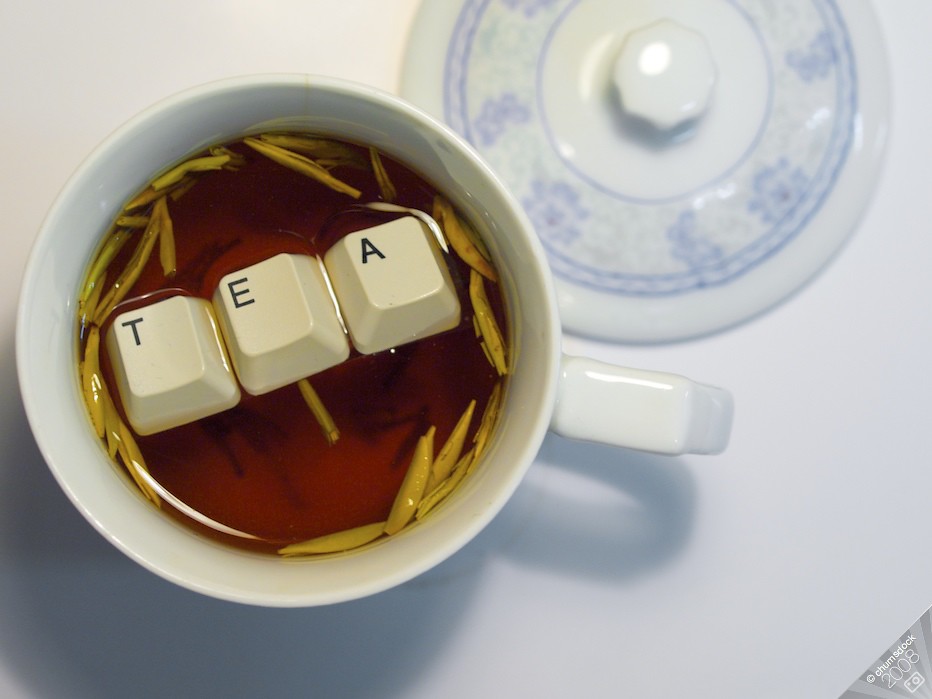
What Are The Different Types of Tea?
Black Tea
Black tea can be traced to ancient China in the mid 17th century. It is also known as red tea due to the colour of the leaves when processed correctly.
Black tea makes up 85% of the western world’s total tea consumption. Its leaves are fully oxidised and known for its darker visual appearance, stronger flavour and higher caffeine content when compared to other kinds of teas.
History of Black Tea
Black tea leaves are fully oxidised, a method of production that was discovered by accident. A farmer’s tea factory in the Fujian Province of China was forced to delay the processing of his tea when the Jianxi army set up camp near his tea factory. At the time, a harvest of tea trees grown in the Wuyi Mountains had taken place, and this influx of invading soldiers delayed the production process – resulting in the leaves oxidising for a much longer period, and presenting darker brown and black hues.
Once the army left the area, the farmer looked for a way to speed up the drying process to stop the oxidation of the tea leaves and to meet orders that needed to be fulfilled. He decided to craft a pine wood fire to dry the leaves – resulting in a smoky flavour and the birth of Lapsang Souchong tea.
Lapsang Souchong is the original black tea processed using the fourth and fifth leaves (denoted by the word “souchong”, which means ‘small sort’ in Chinese), and not the buds of the Camellia sinensis (tea) plant.
Black Tea Industry & Uses
Today, black tea is produced and processed in a variety of geographies and climates, with the largest producers being India, Sri Lanka and Africa. India is the largest producer of black tea, and currently accounts for 44% of the global production of black tea.
Black tea offers a variety of benefits for the consumer. Firstly, it contains antioxidants, which provide a host of health benefits including banishing free radicals and cell damage in the body. Black tea may also be useful for improving heart health as it contains flavonoids, and studies have shown that over 12 weeks that black tea may also reduce blood sugar levels. Test tube studies have also indicated that black tea may play a role in reducing the development of new cancer cells.
How to Drink Black Tea
Black tea is traditionally served on its own, and can also be paired with milk and a slice of lemon. Depending on the variety, brewing times range from 3-5 minutes. Pairing black tea with milk is said to be an English tradition. Pairing a black blended tea like Earl Grey with a slice of lemon can help bring out its citrus notes. You might also choose to add a bit of sugar to cut the natural bitterness of many black teas, however, this will influence the natural full-bodied taste of black tea.
Links for more info on Black Tea:
– The Benefits of Black Tea
– Black Tea on Wikipedia
– The Health Benefits of Black Tea
– What Is Black Tea?
– The Complete Guide To Black Tea
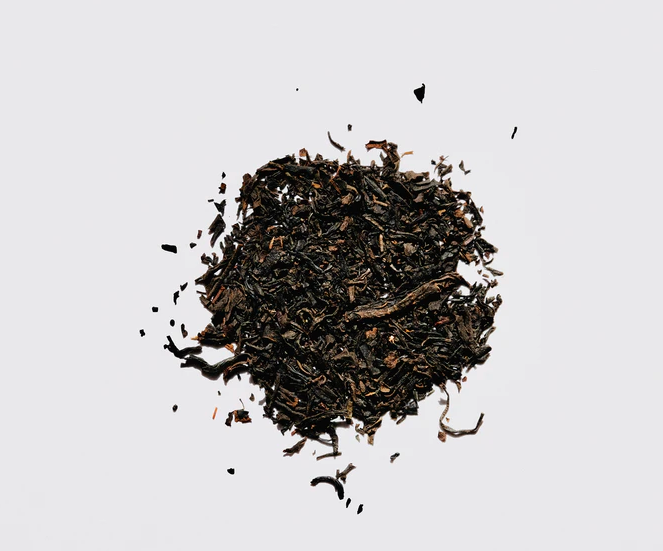
Popular Black Teas
Assam Tea
This is named after the region from which it is produced – Assam, in Northeast India. Assam tea contains caffeine, is free from calories and is known for having a brisk, malty flavour and a full-body feel on the palate. In addition, this type of tea has a strong, rich, dark colour.
Assam tea can be enjoyed hot or cold and can be enjoyed on its own or paired with milk to enhance the sweetness of its naturally strong taste. Assam tea is commonly used in blends to form rich breakfast teas. If you plan on enjoying it as a hot beverage, remember to brew Assam for 3-5 minutes for the best taste and visual appeal.
Assam Tea links:
– Assam Tea on Wikipedia
– What Is Assam Black Tea?
Ceylon Black Tea
This is one of the most popular teas worldwide, and is produced in Sri Lanka, where the climate, soil, weather and land elevation favour abundant cultivation of the tea plant.
Tea plants were brought to Sri Lanka when the country was a colony under British rule, and was first planted in the Royal Botanical Gardens in Peradeniya. It was first commercially cultivated by a Scotsman, James Taylor, after he relocated to Sri Lanka in 1852.
Ceylon Tea contains 50-90mg of caffeine per cup, with a bold, brisk flavour, and medium to high levels of tannins, with notes of citrus, cocoa, and spice. This delicious black tea is an orthodox tea, and is created using traditional methods of tea production and is most usually processed by hand.
Ceylon Tea links:
– Ceylon Black Tea from Sri Lanka
– The Story of Ceylon Tea
– A History of Tea Timeline
Lapsang Souchong
This is one of the oldest black teas, first created in 1646 and cultivated in the Wuyi Mountains during the Qing Dynasty. Qing soldiers advanced into the region, frightening civilians and farmers who wished to flee the area.
Before leaving the area, tea farmers wanted to prevent the spoilage of their most recent harvest and quicken the pace of processing. As a result, the harvested tea leaves were dried over fire and buried in sacks. Then, the tea was packed carefully to preserve its value and shipped to Dutch traders.
Lapsang Souchong is usually processed using the larger leaves of the Bohea cultivar of the Camellia sinensis plant. The coarse nature of the larger leaves allows the smoke to more readily adhere to the leaf, and provide Lapsang Souchong with its inherent smoky aroma and flavour profile.
This historic black tea is said to have intense empyreumatic notes which may resemble smoky flavours, and might even remind you of a smoked meat like bacon. The aftertaste lingers and may liken to a woody, pine flavour on the palate.
Lapsang Souchong is usually served hot, using water with a temperature that is just under boiling point, around 95°C. The tea leaves are usually infused for 3-5 minutes, using 2-3 grams per 150ml of water.
Other popular black teas:
- Chai Kee Mun
- Dian Hong Cha
- Kenyan Black Tea
- Maylasian black tea
- Taiwanese bubble
- Thai milk tea
- Masala chai tea
- Japanese Royal Milk Tea
- Irani Chai
- Nilgiri
- Oolong
- Darjeeling
Oolong Tea
Oolong Tea & the Oolong Marketplace:
Oolong is a traditional Chinese tea that is semi oxidised, and falls somewhere in between green and black tea. Though it was primarily produced in China and Taiwan for many years in specific areas of China and Taiwan (such as Anxi & Fujian) with the right growing conditions, in recent years production of Oolong has also grown in India and Nepal.
Oolong makes up a smaller portion of the global tea market than black tea, and is predicted to bring in a total revenue of around 400 million (USD) by 2024.
Oolong Tea Production
Oolong teas are crafted using a lengthy production process. Initially, fresh leaves are dried in the sun to reduce excess moisture, and once wilted, these are tossed in order to break them apart and quicken the process of oxidation. Next, the leaves are fermented, which results in the breakdown of chlorophyll throughout the leaves, and the release of tannins. During the final stage, fixing, the tea is heated to halt enzymes responsible for oxidation.
Oolongs that have been oxidized for a short period of time will resemble a flavour closer to green tea, whilst those oxidized for longer have a flavour profile that is similar to black teas. Oolong teas tend to have two different styles visually: the one is small and curled in appearance, whilst the other type looks like long strips. This tea also contains a fair amount of caffeine, with a cup of high- caffeine Ooolong tea containing as much caffeine as two-thirds of a cup of coffee.
Benefits of Oolong Tea
Oolong tea can provide a wide variety of health benefits, and is renowned for its high concentration of antioxidants, with EGCG (a key antioxidant) being shown to boost cardiovascular and metabolic health. Studies conducted in Japan have suggested that Oolong can lower the risk of heart diseases and type 2 diabetes. Oolong also contains a range of vitamins and minerals, including vitamin C which is great for the immune system.
How to Drink Oolong Tea
If you plan to serve Oolong tea hot, it’s best to let the tea steep for 1- 5minutes and continue tasting your brew to see when it meets your preference. If you allow Oolong to steep for longer, it can bring out a wider flavour profile, aromas, and caffeine content. Typically Oolong tea is served as is, without milk or sugar.
Oolong tea is also a great choice for making iced tea as it’s flavours aren’t as strong as in black tea. Brew as for hot Oolong tea and allow it to cool. You can then add sugar to sweeten as you desire.
Most Popular Oolong Teas
Oolongs exist in two distinct varieties: Chinese and Taiwanese.
Chinese Oolongs are generally oxidized more and baked at a higher temperature than the Taiwanese type. Chinese Oolongs thus tend to have more astringent flavour profiles and a fuller body feel in terms of flavour.
As a result of being processed at higher temperatures, Chinese Oolongs are curled and wrapped in appearance, whereas Taiwanese Oolong are long-strip curly style.
Chinese Oolong Teas
Phoenix Tea (Dan Chong or Dan Cong)
Phoenix Oolong tea gets its name from the region in which it is produced, namely the Phoenix Mountain in Guangdong Province, China.
It is said that Phoenix tea was first found by an Emperor that was a part of the South-Song Dynasty, where on his travels, he passed the Phoenix Mountain where his servant plucked tea from the leaves of a tea tree to prepare a hot brew.
Phoenix Oolong tea has also won plenty of prizes in the region ever since, and is a highly reputed tea in China. This renowned brew originates from the Ku-zhu-keng Village specifically (in Phoenix town). The region provides a climate with high humidity, sufficient rainfall, and experiences plenty of sunlight and heavy dew, and tea trees are grown at high elevations in this region. These climatological aspects are said to have an influence on the cultivation and resulting taste and aroma profile of Phoenix Oolong.
When Phoenix Oolong tea is brewed, its colour resembles a mixture of yellow and orange hues, which has a bright, clear shine visually. Its taste is full bodied, yet soft and palatable with a sweet aftertaste.
Da Hong Pao
Da Hong Pao originates from the Wuyi Mountains of Fujian Province, China. It is the most expensive tea in the world, with a 1.2million USD value per kilogram of tea leaves. A pot of this prestigious tea would have set you back around 10 000 USD in 2016. Of course, some of the Da Hong Pao teas that undergo less aging may be valued at more affordable prices.
Genuine Da Hong Pao is processed using a cutting from a very limited single group of mother trees, which makes this tea incredibly sought after. The British attempted to grow Da Hong Pao early on, but the climatological conditions and growing mediums available proved to not provide the right platform to grow these seeds sourced from Guangdong, which required the iron-rich soil and unique minerals present in the region for vegetation. It was also noted that when this variety of the Camellia sinensis plant was grown in other regions, it did not resemble the traditional Da Hong Pao textures and flavours.
When consumed, Da Hong Pao has peaty and earthy notes with hints of stone fruit, brown sugar, and molasses that make up its flavour profile. Its fragrance is deep, woody with notes of tobacco and sandalwood and a smooth, full-bodied texture. As far as appearances go, Da Hong Pao has a shape that resembles tightly knotted ropes, or twisted strips, with green and brown hues.
Da Hong Pao is served hot, using a brewing temperature of around 100 degrees Celsius and is brewed in intervals, starting with a brew time of 30 seconds which is usually lengthened depending on how strong the tea is required to be before serving.
Taiwanese Oolong Teas
Gaoshan Oolong tea
Also known as High Mountain Tea, this tea is grown at high altitudes in the mountains of central Taiwan. The high humidity and rainfall in region provide the perfect conditions for the vigorous growth of tea plants. Gaoshan is split into two categories – winter and spring Gaoshan – with the former harvested during late October and the latter harvested during the middle of June.
The production process for this Oolong tea takes around 40 hours, with the end of the leaves of the tea plant handpicked and then spread out on a tarp under direct sun to wither and gain floral aromas (such as jasmine). The leaves are then shaken, rolled and folded, a process which kicks off the oxidation process, whereafter it undergoes ‘firing’, during which the leaves are shaped into pearls or strips, and heated at high temperatures to stop the oxidation process. Slight roasting may occur, but this may add to the overall full-bodied flavour.
Modern day Gaoshan is processed using tea leaves that have only been 20% oxidized, whereas older forms of Gaoshan were made using tea leaves that were 30-35% oxidized.
Gaoshan Oolong’s flavour is very earthy, but palatable and smooth and due to the slight fermentation process and roasting process the leaves undergo, the final product features less astringent qualities that other unfermented green teas. The taste of Gaoshan Oolong can also vary due to the region where it is grown, and at the elevation at which it was cultivated. These factors can also influence the price of Gaoshan tea leaves.
Gaoshan is traditionally served as a hot brew, using clay and porcelain pots and other brewing vessels. Gaoshan is usually brewed from 3 – 5 minutes, to match your personal preference. A process of awakening the leaves is usually conducted by pouring the hot water into the vessel (porcelain or clay) with the Gaoshan leaves, then pouring out the water, and refilling the vessel with hot water again to continue brewing your Gaoshan. The leaves can also be brewed up to 5 times if necessary.
For more info on this fascinating variety of Oolong, take a look at this article on the history of Gaoshan Oolong tea.
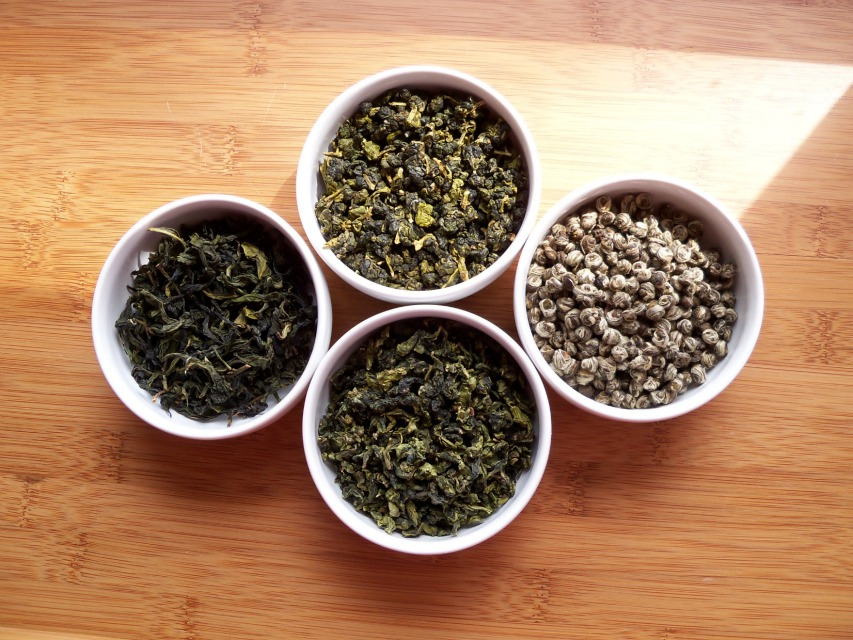
Green Tea
Green tea derived from Camellia sinensis accounts for around 15-20% of the total consumption of all teas, with 600,000 tons consumed globally every year. In fact, the green tea market is set to grow by around 8.1 billion USD globally by 2025. China is the largest producer of green tea, and the popularity of green tea has grown significantly year-on-year globally. The total value of green tea shipments imported to the US from China, rose from a total 14 million USD in 2000 to around 66 million USD in 2016.
Green Tea Production
Green tea is produced using the tea plant, Camellia sinensis, and once the tea leaves are harvested and then heated or steamed immediately then dried. Green tea differs from black and Oolong teas as it doesn’t undergo a prolonged drying and oxidation process. Although green tea originated from China, it is now produced all over the world in countries such as China, Japan, India, Sri Lanka, Taiwan, Bangladesh and New Zealand.
Green Tea Uses and Benefits
Green tea is praised for the wide variety of health benefits it may provide the consumer, containing a myriad of antioxidants and a much lower caffeine content per cup than black tea. Green tea contains a key antioxidant, EGCG, which may help prevent cell damage and reduce inflammation in the body. Green tea is also known for its use alongside diets and fat burning exercise plans, as green tea may increase fat burning and boost the rate of your metabolism.
How to Serve and Enjoy Green Tea
As far as the serving suggestions for green tea – preheat your pot, add your green tea leaves, pour in some hot water and wait for at least a minute before serving. There is no right or wrong way to serve green tea, and the brewing time should depend on your preference. Longer brewing tends to bring out more bitter notes in the tea, but brewing for too short a period may not draw out enough flavour.
The Best Green Teas
Sencha
Sencha is one of the most commonly produced kinds of green tea, and it uses the most common processing methods. It is the most popular green tea in Japanese culture with 80% of all tea that comes from Japan consisting of Sencha.
Sencha is created through steaming, rolling and drying of the leaves of the tea plant. The leaves that are chosen are typically the upper shoots of the tea plant which are more immature.
The steaming process commences immediately after harvest in order to prevent oxidation, which would influence the naturally bright colour of Sencha. If the leaves were to undergo oxidation, this end product would be considered Oolong.
The health benefits of Sencha tea may be due to its high levels of antioxidants, present in most green teas, and studies suggest that it may include assisting with weight loss, boosting the immune system, reducing cholesterol levels, and improving oral health. Sencha also contains caffeine and you may find anywhere between 12 to 75 mg of caffeine per cup of sencha, versus a regular cup of coffee where you may encounter 80 to 200mg of caffeine.
Gyokuro
Gyokuro differs from classic Sencha, where leaves are taken from tea plants that do not grow in full sunlight, but experience the shaded periods of up to 3-4 weeks by intentionally covering the plant with straw or black mesh cloth. Gyokuro is primarily produced in Japan.
Gyokuro was invented in 1835 by renowned tea merchant Yamamoto Kahei (the sixth) who hailed from Tokyo.
Gyokuro is prepared slightly differently compared to how other green teas are served. To brew Gyokuro tea you should use mineral water heated to a temperature of around 50 – 60 degrees Celsius (some premium Gyokuro teas require brewing even lower at 40 degrees Celsius).
The combination is then steeped initially for between 2 – 3 minutes, and then again for between 30 – 60 seconds for each additional steep. You may also wish to preheat your cups in order to preserve the temperature of your Gyokuro for longer.
Tencha
Tencha is the name for tea leaves used for matcha before the leaves are ground into fine powder. The tea plants are also subjected to shading periods, which increase the levels of amino acids and caffeine present in the plant’s leaves.
Tencha’s flavour profile is complex, but soft, with aromatic floral notes, however, it needs to be brewed properly. Brewing low-grade Tencha may not result in a flavourful brew, or many scented qualities, and you may need to shop around for high quality Tencha to make a worthwhile brew of this hot beverage.
Tencha is brewed the same way as Gyokuro (above), but it is important to add more Tencha leaves to your brew as it is a much lighter tea, with Tencha only holding up to half the weight of Gyokuro. Tencha can also be brewed as a subtle iced tea.
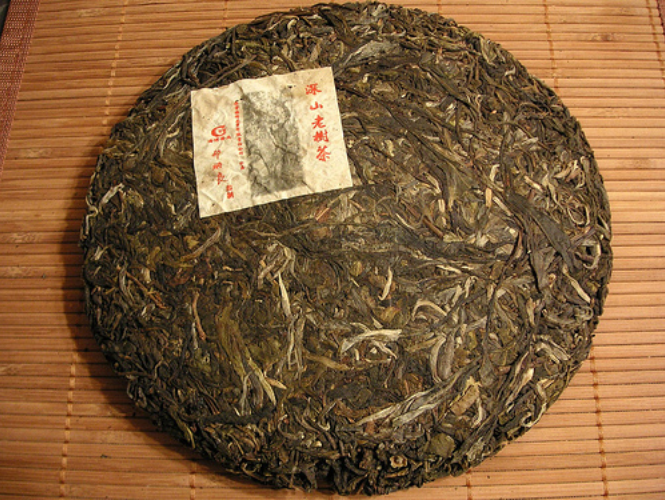
Pu-erh Tea
Pu’erh (or Pu-erh) Tea originated from the Yunnan Province of China thousands of years ago. Its history is linked to trade routes and relationships in the regions of China and Tibet – it is named after the region, Pu’er City, where it was sold en route to other countries.
Pu-erh tea cultivation
In order for Pu-erh tea to be considered authentic, it must be processed using the broad-leaf varietal of the tea tree (Camellia sinensis var. assimica). The leaves are harvested from three generations of tea trees, namely the Da Shu (meaning Big Trees), Gu Shu (meaning Old Trees) and younger trees grown in specific regions in the Mekong basin. Production must also take place here, and the leaves should be sun dried, and not dried using ovens, to produce genuine Pu-erh tea leaves.
Pu-erh tea undergoes a slow, long and natural aging process which is sometimes only complete after 15 years, with some of the more expensive varieties of Pu-erh experiencing an aging period of over 50 years! Pu-erh has a high concentration of polyphenols, catechins and flavonoids and is the most oxidised tea. This fermentation period is also said to provide the tea with beneficial bacteria and fungal bacteria which may provide additional health benefits for the consumer.
These benefits may include increased energy, improved heart health and function, getting rid of toxins and free radicals, protecting bone health and preventing the growth of new cancer cells. Pu-erh tea is also known for its assistance with weight loss, reducing stress, and contains vitamin C which may help you fend off illnesses.
How to prepare Pu-erh Tea
Pu-erh can be brewed using traditional elegant Chinese methodology, which is a little more complicated. You can find a video on how to serve your Pu-erh tea traditionally here. In the Western World, Pu-erh is generally served using a teapot and strainer, although using an infuser is not recommended when brewing Pu-erh tea as these devices will not allow the leaves to expand and provide their full depth of flavour. It is recommended to use lower temperature water (as with green and Oolong teas) and to steep for around 5 minutes.
The Forms of Pu-Erh Tea
Sheng Cha or Sheng Pu-erh (raw Pu-Erh, or Green Pu-erh Tea)
Sheng Cha is an older form of Pu-erh tea linked to the Yunnan region in China, and its origins suggest it may be one of the first teas to ever be consumed by humans.
Sheng Tea is produced using the leaves from the large leaf Assamica tea trees. The leaves are lightly steamed and then pressed into round, disc-shaped cakes of tea (known as bing cha) and wrapped with rice paper. Sheng Pu-erh tea consists of a more bitter flavour profile, which can soften with age.
Shu Cha or Shou Pu-erh (fermented Pu-erh tea)
Shu Cha also hails from Yunnan province, but it wasn’t invented until the 1970s, where experiments began around creating forms of aged Sheng Tea using fermentation methods.
Shu Cha is made using the same leaves but with different methods of processing in mind. The leaves are harvested and arranged into a pile where they are kept moist for a period of around 2 months to encourage beneficial bacteria, yeasts and kinds of mold to grow.
Shu’s flavour profile is said to contain more potent fishy notes, and its taste may change with age and become more mellow or even disappear depending on storage conditions.
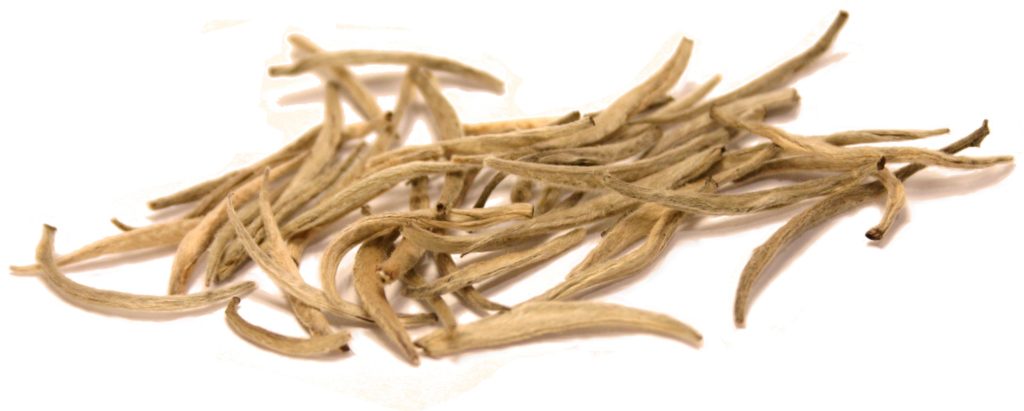
White Tea
White tea’s precise origins are disputed, but what is certain is that it can be attributed to the Yunnan province of ancient China. It is said to have been produced and consumed in the Song Dynasty in Imperial China, and cultivated during the Tang Dynasty. It was used as a tribute to imperial rulers as it was considered one of the finer class of teas.
White tea Production
White tea can be created in a few different ways, and generally undergoes a minimally-processed method of production using the leaves or young immature buds of the Camellia sinensis plant.
This tea plant is grown at a very high elevation, where a cold climate and a harsher terrain adds to the aromatic elements of the plant. These immature parts of the tea plant are steamed or fried to deactivate oxidation and then dried.
There isn’t an international agreement or standard on what exactly constitutes white tea, but some sources use the term to refer to tea that undergoes only a drying process with no additional processing. The market size and global consumption of white tea isn’t easy to quantify, but it’s not very large and it is considered a less commonly processed type of tea.
White tea may provide a variety of health benefits due to its high level of antioxidants as a result of its minimal processing. It may assist in promoting weight loss, oral health, and prevent the growth of new cancer cells in the body. White tea also contains far less caffeine than other teas and is very low in calories, making it more suitable for detox diets.
To fill you in about White tea, we’ve compiled info on the most popular types of white tea below.
Silver Needle (Bai Hao Yinzhen)
Silver Needle tea, also known as Baihao Yinzhen, is made from only the best, top buds/leaf shoots of the tea plant,grown in Fujian, China. Zhenghe and Fuding in the northeastern part of the Fujian Province are the original and major producers of this kind of tea, and they produce it in two different styles.
Zhenghe-style white tea is usually darker than Fuding-style white tea, and has been oxidised slightly longer to provide a full-bodied taste. Fuding-style white tea features a lighter colour and taste profile due to its negligible period of oxidation.
The buds are picked at a specific time of day, usually during the middle to end of the morning when the sun is hot enough to have dried excess moisture from the top buds of the tea plant.
Silver needle tea is traditionally served hot and brewed for up to 3 minutes with water heated to around 80 degrees Celsius and will resemble a light yellow or bleached apricot colour. For info on how to serve silver needle tea in the traditional Chinese way, or using the simpler Western-world methodology, take a look at this guide.
White Peony (Bai Mu Dan)
White Peony tea, or Bai Mudan is made using specific parts of the tea plant: only one leaf shoot and two immediate young leaves are plucked and used to brew this elegant white tea.
White Peony tea is renowned for its fuller and more potent flavour and aroma profile, which white tea drinkers often prefer to the lighter Silver Needle Tea (Bai Hao Yinzhen). Similar to Silver Needle Tea, White Peony Tea is also created in two specific styles, Fuding-style and Zhenghe-style where the major processing of white tea takes place.
White Peony tea is said to provide health benefits including assisting with digestive issues, helping with sleep, improving heart health and combating stress.
White Peony tea is usually brewed using mineral water that is brought up to a temperature of between 70 °C to 80 °C, and will present pale green and/or slightly golden yellow hues. The flavour profile is more fruity, fresh and sweet and lacks more astringent and earthy elements.
Tribute Eyebrow Tea or Gong Mei
Gong Mei is a variety of white tea that is more processed than the previous two white teas in our list, and is considered the 3rd grade of white tea.
The tea is made using the immature leaves of the tea plant, which have a recognisable curved shape which is where the word “eyebrow” comes into play when describing Gong Mei.
Tribute Eyebrow tea is known for having a slightly richer flavour profile, with more earthy qualities as well as fresh flora notes, and it is often served alongside Dim Sum. Gong Mei is usually brewed in 1-3 minutes, using mineral water at a temperature of 75-80°C, and can be served using traditional tea sets and the Chinese method of preparation, or by using a teapot and strainer, whilst using an infuser may not produce the best results.
Other popular white teas:
- Himalayan White Tea
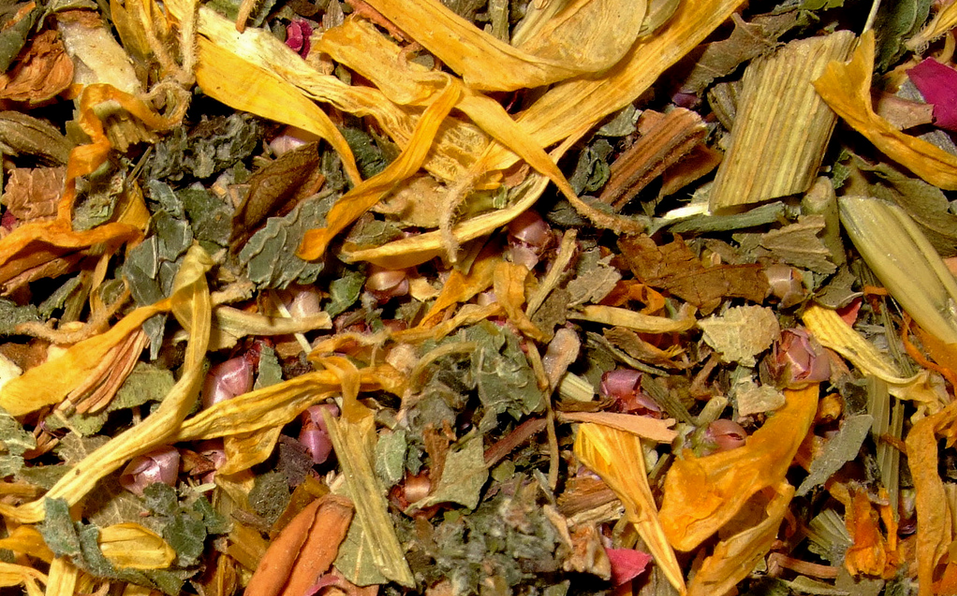
Herbal Teas
Herbal teas hail from all over the world, with some of the most popular originating from regions in Asia and Africa. Strictly speaking, when herbs are steeped and/or infused to make a beverage, they are not ‘tea’. Rather, they are classified as a ‘tisane‘ (being a French word, it rhymes not with ‘rain’, but rather ‘naan’).
Chinese folklore speaks of Emperor Shen Nong who, according to legend, brewed the first herbal tea infusion in 2700 BC – but because of the wide variety of herbal teas and their assorted ingredients, each will have its own origin and history. Herbal teas can contain infusions of a variety of herbs, spices and flowers – whereas the teas discussed above are all made from the Camellia sinensis plant.
The global market size of herbal tea is a segment of the organic tea market that may experience the fastest compound organic growth rate in the organic tea sector from 2020 to 2027. This predicted 16.2% increase in popularity and consumption may be linked to the age of mindful consumers that wish to maintain a healthy lifestyle and use herbal tea as an extremely healthy substitute for other beverages.
Herbal teas may provide a range of health benefits depending on their ingredients, and some are enjoyed to assist with sleep and reduction of stress (rooibos), whilst others may be consumed to promote a stronger immune system and eliminate free radicals like other teas that contain antioxidants.
Below, we provide info on a variety of herbal teas – including our very own specialty, rooibos.
Popular Herbal Teas
Rooibos
Being endemic to the Western Cape province of South Africa, rooibos tea is solely grown and processed in this country. A longtime staple for the domestic market, internationally rooibos tea is somewhat less well known – though this picture has been changing rapidly in the last decade.
The history of rooibos begins well over 300 years ago when the rooibos plant was utilised by the First Nations People of South Africa, including the Khoe Khoe, Nama and San peoples.
The manner in which the wild rooibos plants, growing high up in the Cederberg mountains, were harvested for their leaves and processed by the local people was noted in 1772 by Danish botanist Carl Thunberg, who was a student of the Father of Botany, Linneaus. Following Thunberg’s documentation of the plant, interest in rooibos and its popularity grew. While the First Nations People utilised the leaves of the rooibos plant, it was nothing like today’s known and loved rooibos tea.
The industry came into existence during the 1900s, picking up traction at the turn of the 20th century, thanks to the efforts of the Ginsberg family, who are the founders of the oldest brand in the rooibos tea industry. In 1904 a Russian immigrant, Benjamin Ginsberg, invented the rooibos tea curing (or fermentation) process used today after much experimentation.
Today the rooibos tea industry consists of over 300 commercial farms, 150 small-scale farmers and around 80 tea courts, with 11 processors of rooibos tea and extracts in the domestic market. We cover the full history of rooibos in our article, The Ultimate Guide to the History of Rooibos Tea.
Rooibos may provide a variety of health benefits, including improving sleep, reducing stress, assisting the skin barrier, and regulating sugar levels in the body. We cover these benefits in full in our article The Ultimate Guide to Rooibos Tea and its Benefits.
Rooibos tea can be served as a delicious hot brew, using a teapot and strainer or infuser, and rooibos also makes a great base for delicious iced tea. Both of these beverages can be paired with honey and a slice of lemon to bring out the lighter, floral notes of rooibos.
Honeybush
Honeybush tea (or Cyclopia meyeriana as it’s known botanically) was first documented in the 1700s, when it was used by the early settlers in the Cape and used for medicinal purposes. Later, the plant was documented by Carl Thunberg, when on a field trip to the region he recorded what he dubbed “honigtee” or honey tea.
The first commercial sale took place in the 1930s, with honeybush from the Kouga region of the Eastern Cape, whilst the first commercial harvest of honeybush took place in 1996 and formal regulations for cultivating and trading honeybush tea were drafted in 2000.
As far as the industry pricing for honeybush goes, the 2017 factory price for bulk honeybush sat at around R60-70 per kg (wet), where previously the bulk factory price of honeybush was R7 per kg (wet) in 2010. In the last 15 years there has been a steady increase in the amount of honeybush exported per year. This has been accompanied by a steady and significant increase in the value of honeybush over the last 6 years: by 2017, a kilogram of honeybush on the international market was retailing at approximately R1000/kg.
The plant is indigenous to South Africa and grows wild in mountainous regions in the Western Cape as well as towards the wetter regions of the Eastern Cape such as Tsitsikamma, Kouga, and the Baviaans Mountain Ranges.
Honeybush may provide a range of health benefits for the consumer, as it contains high levels of antioxidants, which can help with weight loss. Studies also suggest that honeybush tea may be useful for diabetes 2 sufferers as one of key polyphenol elements (hesperidin) can assist in regulating key enzymes involved in sugar metabolism. The antioxidants honeybush contains can also assist with maintaining your skin, by neutralizing free radicals which leech electrons from the skin, and are brought on by exposure to the sun and harmful ultraviolet radiation.
Honeybush tea works as a steaming hot beverage, or as the base for a delicious iced tea on a hot summer’s day. It can be brewed using a teapot and strainer, or an infuser, and may also be served with a slice of lemon to enhance the light, floral notes of this herbal tea.
Ginger Tea
Ginger is the rhizome, or the underground stem, of the Zingiber officinale plant, and is part of the same family as notable herbs turmeric, cardamom, and galangal.
The root has long been used to improve the health in Indian and Chinese culture, where the plant may be chopped and consumed, used as a spice in different dishes, and of course brewed as a healthy herbal tea. It is not known who brewed the first pot of ginger tea, but it is estimated that this took place around 5000 years ago in South-East Asia.
The benefits of ginger tea to the consumer may include the improvement of digestion, reducing inflammation, and bolster the immune system. Making ginger tea is very easy, and involves boiling water and fresh slices of ginger. This spicy and tangy tea can also be paired with a slice of lemon to lighten its flavour profile and enhance the tangy taste of ginger tea.
There are many different herbs used to make infusions and beverages, but among the most popular other popular herbal teas are:
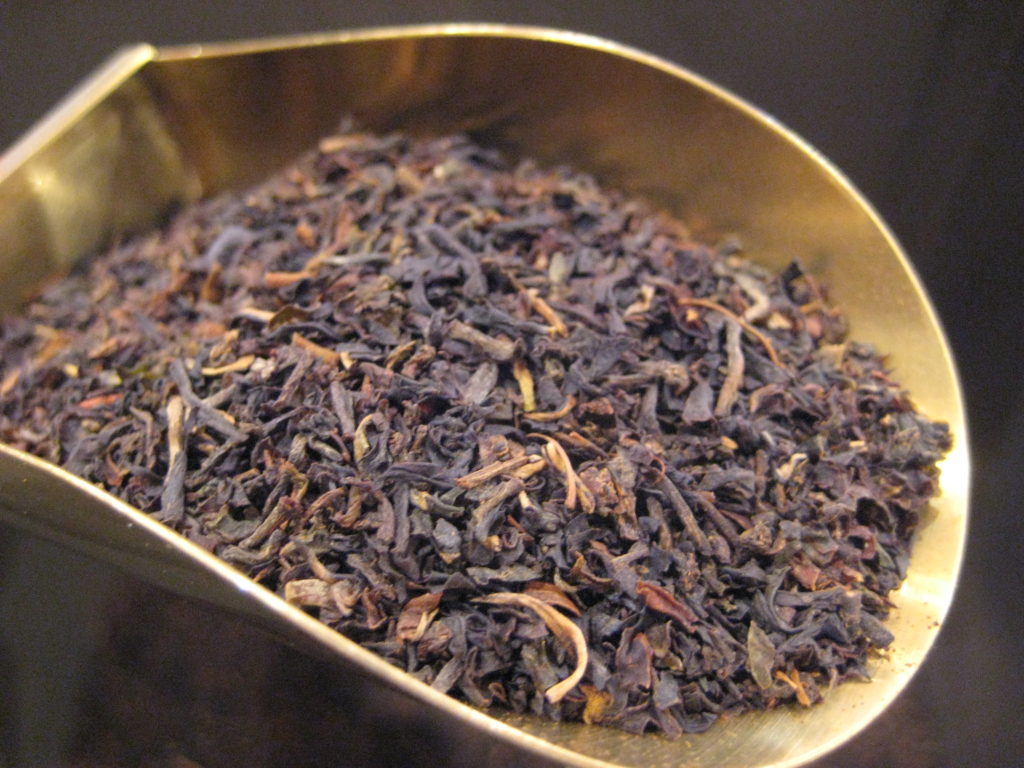
Blended Tea
Blended teas, as the name suggests, are created using a mixture of different types of tea leaves, with the aim being to create a well-balanced flavour and aroma profile from different qualities and characters that different teas may possess.
You can find Breakfast teas and Afternoon teas created using blends of black teas, and Russian Caravan tea, which is created using Oolong, Keemun, Lapsang Souchong and Dian Hong tea.
Though the Chinese made their first tea blends over 2500 years ago, some of the most notable blended teas today are Jasmine tea and Earl Grey tea.
Blended teas form part of the most popular teas consumed across the globe, as they are created using some of the best black teas on the market. It can therefore be assumed that the blended tea market will grow alongside the growth of the global tea market and the market for the black tea variety.
Blended teas may provide a range of health benefits, including the antioxidants and nutrients contained in green teas, black teas and and even the inclusion of other plants to enhance the aromas and benefits of blended teas. Blended teas are also often scented using different additives or through being housed in storage containers containing specific aromas, flavourants, perfumes or essential oils. This can provide the consumer with a wider range of choice when it comes to picking their daily cup of tea.
Popular Blended And Scented Teas
English Breakfast Tea
English Breakfast tea is both a black and blended tea invented by Robert Drysdale, a Scottish-born tea master who used a blend of Ceylon, Assam and Keemun leaves and marketed this blend as Breakfast Tea, to pair with the flavours of a protein rich English breakfast.
Nowadays, English Breakfast tea, also known as just Breakfast tea, is a blend of black teas that originate from Sri Lanka, India, China, and Kenya, and the blend can include Assam, Ceylon, Kenyan tea and Keemun teas.
As the name suggests, this tea is a traditional blend that is a part of English as well as Irish culture. The tea is also said to have been popularised by Queen Victoria, which she drank at Balmoral Castle in Scotland, and returned to London with her own supply.
English Breakfast tea is full-bodied, and known for its naturally strong taste, and is often paired with milk for a flavour that is more palatable, as well as a slice of lemon which can enhance this blend’s fruitier notes. This type of tea is traditionally served hot – however, it’s not uncommon for this blend to be used in homemade iced tea recipes.
Irish breakfast tea
Irish Breakfast tea consists of a blend of several black teas. These may include Assam teas and Ceylon teas, with some of the larger Irish tea brands in the world choosing to use Assam tea as their base. When China first exported teas to Ireland, they were consumed by the wealthier, upper class, but by the 19th century, black teas were consumed by a wider range of the population in Ireland.
Irish Breakfast tea is one of the most popular blended teas, and is synonymous with Irish culture. The Assam black tea base provides a dark colour, strong flavour and malty aroma, and is combined with an additional black tea. One such tea is Kenyan Broken Pekoe, which is a high grade type of broken tea. Irish Breakfast Tea will usually contain tea leaves sourced from countries such as India, Rwanda and Kenya.
Irish Breakfast Tea uses black tea bases, which means it carries the benefits of black tea, including containing antioxidants which may improve heart function, and support the skin barrier, whilst its polyphenols may also prevent the growth of cancer cells and fight cell damage.
This tea blend is usually quite strong, and consists of more astringent qualities when it comes to its flavour profile. As a result, it’s often served with milk, and sometimes sugar or honey.
Jasmine Tea
This is a tea with a lot of history. Its origins date all the way back to the 5th century, where the jasmine plant was introduced to China from Eastern South Asia via India and was used to scent tea. Jasmine is grown at high elevations in mountainous regions, with some of the most popular Jasmine tea being grown and produced in China’s Fujian Province (though it is also processed in Japan).
Typically, Jasmine tea uses green tea as a base, although it is not uncommon to find Jasmine tea that is made using a black tea or white tea base.
To prepare the tea, the leaves are picked in early spring and kept tucked away until late summer when jasmine blooms. Once these two key ingredients have been harvested, scenting takes place in two ways. First, layers of the jasmine blooms and tea leaves are prepared and the combination is stored for a period of time. Secondly, the jasmine flowers are blended with the tea leaves and stored overnight. This process can be repeated to yield higher quality, and stronger scented, Jasmine tea.
Jasmine tea may provide numerous benefits for the consumer – including containing high levels of antioxidants, which may protect membranes of red blood cells, and prevent free radical induced oxidant of red blood cells. Jasmine tea also contains lower levels of caffeine.
Jasmine tea can be prepared using a teapot and strainer for best results, and can also be served cold as an iced tea, and paired with slices of lemon to bring out more of its floral notes.
Earl Grey
Earl Grey is one of the most famous blended teas and a staple in English culture. It was said to be named after Charles the 2nd Earl Grey and British Prime minister during 1830-1834). Earl Grey is created using black tea and the addition of the oil of bergamot oranges, a fruit grown primarily in Italy.
It is unclear how Earl Charles became a part of the creation of this tea, or how it was named after him. Some sources suggest that the idea may have stemmed either from the Earl receiving delicious bergamot oranges in a shipment from Italy to England, and through connections the Earl had with a Chinese mandarin that may have resulted the idea to create a blend that would fit the mineral water present at his Howick Hall grounds in Northumberland.
It’s also hard to quantify the global production of Earl Grey, but it is a blended tea using black tea and flavouring which puts this tea into a segment of more commonly produced teas.
With its black tea base, Earl Grey has similar heart-health improving benefits, and may also be able to lower blood cholesterol, and may in turn decrease blood pressure. This aromatic blend may also assist with digestion issues, and contains flavonoids which may help lower inflammation in the body.
Earl Grey tea is traditionally served using a teapot and strainer, and can be enjoyed as black tea alone, or paired with milk to reduce some of the more astringent qualities. Some also enjoy Earl Grey with a slice of lemon to bring out the citrus notes naturally present in the blend, and honey is another popular pairing.
The recommended brewing time for Earl Grey Tea is 2-3 minutes.
Other popular blended & scented teas:
- Rosehip tea
- Linden flower tea
- Mint tea
Premium Grade Rooibos Tea
Thanks for joining us to learn more about the different types of tea – we hope you’ve learned a bit more about the world of tea and you may even have a tea you’re excited to try next time you’re out and about.
If you’re a tea fanatic, you’ll also enjoy learning more about The History of Rooibos Tea, which is a remarkable tea that is known for its subtle, naturally sweet taste, but also its wide variety of benefits, which you can find out about in The Ultimate Guide to Rooibos Tea and its Benefits.
Of course, rooibos tea is our passion and the farming of it is our way of life – so if you’re looking for a high-quality, reputable supplier of premium grade bulk rooibos for your products, or tea brand, look no further: our farm is the perfect match for your specific needs. As one of the largest organic rooibos farms in the world, situated in the Cederberg in South Africa, we produce some of the world’s finest rooibos tea.
We supply local and international markets with a range of ethically farmed and organically certified high-quality bulk rooibos products. From long and short cut rooibos to rooibos dust we have a range of products and packaging to suit your requirements and can provide invaluable support in building your value chain and marketing your brand.
For all of your premium, organic rooibos tea requirements, you’re welcome to get in touch with us to discuss how we can assist you.

